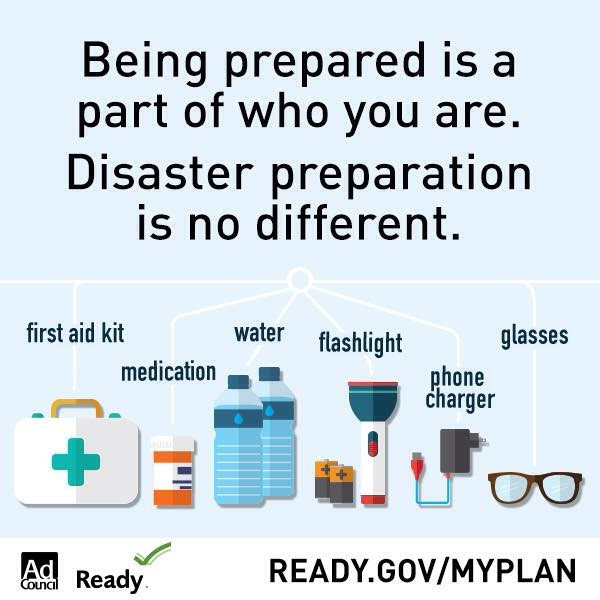Disclosure: In any review for a product or service, products or compensation may have been provided to me to help facilitate my review. All opinions are my own and honest. I am disclosing this in accordance with FTC Guidelines. Please see “Disclose” and "Terms of Use" tabs for more information.
“We Prepare Every Day” is the first in a series of videos that aim to deliver a strong preparedness message by showing people with disabilities taking charge to prepare themselves and their families for emergencies.

The launch of the new PSA coincided with the 25th Anniversary of the Americans with Disabilities Act (ADA) on July 26, and it precedes National Preparedness Month in September. The PSA provides equal access to all viewers by including open captioning, a certified deaf interpreter, and audio description for viewers who are blind or have low vision.
Created pro-bono by Free Range Studios, “We Prepare Every Day” shows whole community and individual emergency and disaster preparedness as a part of everyday planning. One of the goals of the PSA is to encourage all Americans to “Be Informed, Make a Plan, Build a Kit, and Get Involved.” Resources and guidelines on how to do this can be found at Ready.gov/MyPlan.
Be Informed
First, you need to be informed about potential emergencies and disasters where you live, work, or visit. Then, you can go about making a plan that fits you and your loved ones.
Make a Plan
Making a family emergency communication plan with your friends and family before a disaster occurs is important. Why? Because it will help you answer questions: how will you get in touch with each other? How will your family get to a safe place? It’s important to make a plan now so that you will know where to meet, how to find each other following a disaster, and how to communicate in an emergency that works for your family’s specific communication needs.
Build a Kit
While each person’s abilities and needs vary, everyone can take steps to prepare for all types of emergencies. By evaluating your own individual needs and making an emergency plan that fits those needs, you and your loved ones can be better prepared. For example, if being without access to medications, help, or other services you need to maintain your health, safety and independence for even a couple of hours or days could be devastating, and you need to be prepared more than ever.
Get Involved
People with disabilities are encouraged to take a seat at their community and local government- level planning tables. Planning for emergencies and disasters with people who have disabilities and others with access and functional needs rather than planning for them will allow us to understand and address the needs of the whole community in a disaster.
To get more information on how to make a family emergency communication plan, build a disaster supply kit or to learn how to get involved in community preparedness, please visit Ready.gov/MyPlan.
- While each person’s abilities and needs vary, every individual can take steps to prepare for all types of emergencies. By evaluating your own individual needs and making an emergency plan that fits those needs, you and your loved ones can be better prepared. Some items to consider including in your post:
- What medical devices or assistive technology devices you need to have with you if there is an evacuation order from local officials
- Your plans to remain independent if you require oxygen or mechanical ventilation
- Practice your plan with your support network, just like you would a fire drill.
- Discuss your needs and/or the needs of a family member; learn about their assistance requirements or the services they depend on.
- Advocate including people with disabilities and others with access and functional needs into emergency planning in your community.
All of these questions and more are covered in the free guide available for download here: http://www.fema.gov/media-
















Thanks alot ,i didnt know that about the month of september.